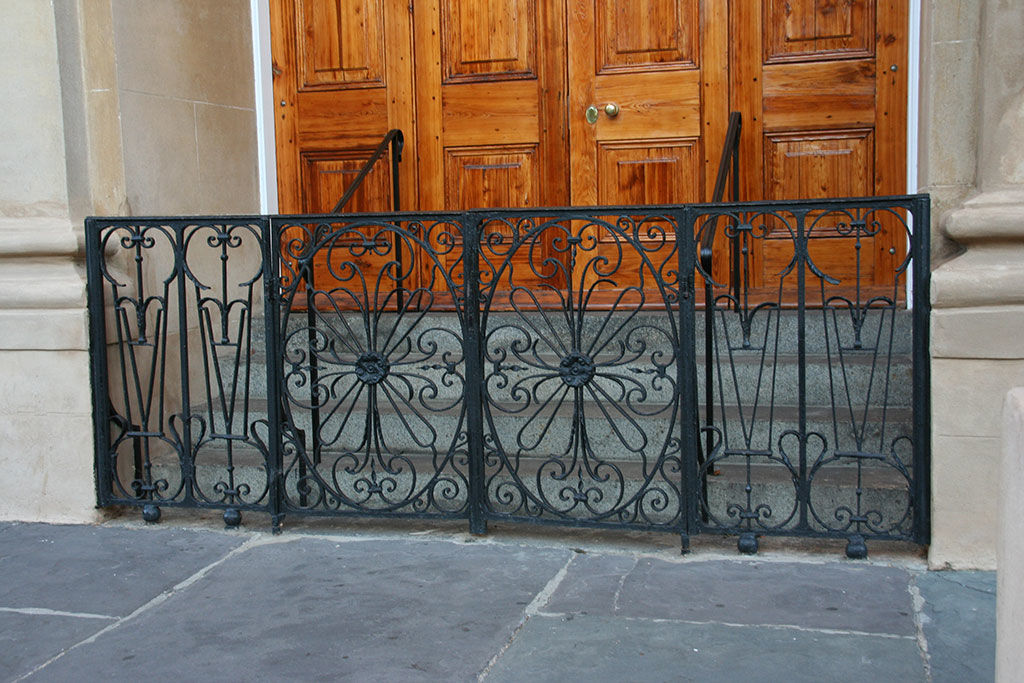As you stroll through Charleston’s historic streets, you can’t help but admire some of the intricate iron work around the city. Philip Simmons, known as the “Keeper of the Gate”, is the talented artisan behind this beautiful work.
Mr. Simmons began his blacksmithing career in 1925, when the flames and rings of the blacksmiths’ hammers at Peter Simmons (no relation) blacksmith shop intrigued Philip. He was offered an apprenticeship at the shop, and within 5 years became a partner with Peter Simmons.
In the 1920s and 1930s, much of a blacksmith’s work was repairing or creating utilitarian objects, such as sharpening farmers’ ploughs, sharpening tools or creating a new metal rim for a wagon wheel. Luckily, Peter Simmons taught his apprentice to do more, occasionally showing him how to make decorative pieces of wrought iron, which held great appeal for the young blacksmith.
Philip’s interest in the decorative side of blacksmithing turned to a profitable skill, when in 1931 Charleston’s city leaders adopted a historic preservation ordinance, which established an “old and historic” district downtown. As work started on some of the buildings in this district, Philip began to receive requests for repairs to decorative ironwork on gates, balconies, window grills, fences, stair railings.
In 1947, Philip received his first commission to create a full gate for shopkeeper on King Street. Reluctant, Philip was encouraged by the shopkeeper to take the job, and went on to create several gates and pieces for the shopkeeper’s homes and businesses in Charleston, Sullivans Island and North Carolina. The quality of his work had quickly spread, and by the 1950s and 1960s Philip’s work could be found in several prominent locations in Charleston.
Philip’s work and reputation continued to grow, and he later received an invitation to the Smithsonian Museum’s “American Folklife Festival” and was included in the first group of recipients of the National Heritage Fellowship from the National Endowment for the Arts, the highest honor the organization grants to traditional artists
If you would like to enjoy some of his work, head on over to the Lowcountry Digital History Initiative’s interactive map to see where Simmons’ work may be admired throughout the city.
Interested in finding a home with some of Philip Simmons work? Reach out to us – we’d love to help!
Warmly,
Lauren & Cambron | Lauren Zurilla & Associates


Left to Right: 91 Anson Street, St. Philips Church
Sources: Lowcountry Digital History Initiative, College of Charleston; Photos: Bradley Blankenmeyer & CraftInAmerica.org

